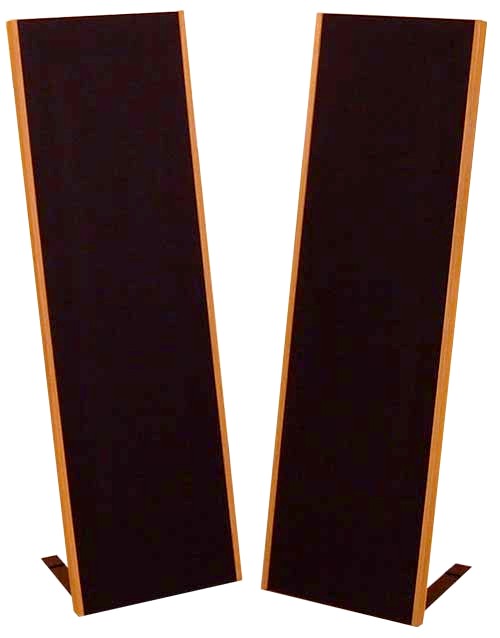
Magnepan – a brand which has been producing iconic (and, sometimes, expensive) magneplanar speakers for over 43 years – has recently announced it will now sell its MMG model for the unprecedentedly-low price of $600/pair. At this point, most of our audiophile and speaker enthusiast readers have jumped ship to go order a pair. But, sadly, the significance of this deal is probably lost on most folks – here’s why we think that is and why we hope that may change soon.
For the vast majority of music listeners, the most significant barrier to better sound at home is price. Between mortgage payments, tuition, taxes, food, and health insurance, most people simply don’t have the funds available to splurge on a dedicated two-channel audio system. Ironically, consumers magically find the money for a flat-panel HDTV, even if it costs three times the price of a pair of high-quality loudspeakers.
Human beings are visual creatures, and an impressive looking image is going to win out over a lifelike-sounding pair of loudspeakers 99 percent of the time. Music also requires greater concentration than watching “Lizard Lick Towing,” and most people will find any excuse not to sit down with a partner/spouse/home intruder and enjoy music together. Headphone use has contributed to this, and while it is great to see so many young people exploring new music via their iPhones and tablets, it is also robbing folks of a far more meaningful experience. It’s like getting to third base with the prom queen – It’s fun, but not quite going all the way.
So if you’re willing to spend $1,500 on a television set (which you’ll probably replace in under 5 years), $2,000 on a MacBook (which you’ll replace even sooner), $250 on a pair of headphones, and $400 on a tablet/smartphone, what possible objection could you have to spending $600 on, say, a pair of planar loudspeakers that will outlast all of these products and provide far more emotional satisfaction? Perhaps we’ve taken instant gratification too far.
Audiophiles also deserve some of the blame for turning the fun of music listening into a solitary experience that is more obsessed with equipment than the music itself. We lose sleep over $2,000 cables and equipment tweaks rather than promote better sound quality to the 99 percent who have never heard a good system.
So what exactly are Magneplanars and why would you want a pair in your living room?
Magnepan, based in White Bear Lake, Minnesota (another American manufacturer which still makes things at home,) was founded by Jim Winey who developed his planar driver technology back in 1969. Unlike conventional loudspeakers which utilize cone drivers in an enclosure, planar loudspeakers use a series of thin wires attached to a super-thin sheet of mylar. The mylar is then arranged to sit in a vertical array of permanent magnets. A quasi-ribbon tweeter handles the treble while a planar magnetic driver covers the midrange and bass. Magneplanars and other planar-magnetic loudspeakers are often referred to as “panel speakers,” and while that is a simplistic way of looking at it, that’s exactly what they are. The mylar sheet gets “turned on” when the panel receives an amplified signal and produces sound from both the front and back. In audiophile-geek terms, they are dipole loudspeakers.
Because these speakers produce sound from the front and back of the panel, they can’t be placed flush against a wall. The MMGs – which, at 48 x 14.5 x 1.2-inches (HxWxD), are Magnepan’s “baby Magneplanars” – look like the monolith from 2001: A Space Odyssey. Black isn’t the only color option for the panel fabric but it’s the best looking one. The wood panel trim comes in black or natural oak trim.
While the ability to place these speakers properly is key to getting great sound out of them, the bigger issue is what to power them with. The MMGs aren’t terribly easy to drive, so unless your current amplifier or A/V receiver (AVR) is so robust that it can double its output into a 4-ohm load, they may not work for you. Y
But, you can get away with not spending a fortune on a good amplifier to drive these loudspeakers; NAD, Parasound, and Rotel are good starting points, but remember that AVR manufacturers tend to fudge the numbers a tad when it comes to their 4 ohm output. We would be hesitant to recommend any AVR unless it is truly capable of offering a stable load in 4 ohms. Consult with the manufacturer if you’re not sure.
Once you have a suitable amplifier selected, providing a source of music could be as simple as using a laptop or music server connected to a USB DAC. It’s an effective and affordable way to make such a system sound great. If you’re looking for greater insight into how the MMGs can work for you, take a peak at what fellow scribe John Darko at Digital Audio Review has to say about driving the MMGs.
The MMGs don’t reproduce bass like conventional loudspeakers, but in a small-medium sized room they will surprise you with some decent mid-bass punch and will stun you with their soundstage capabilities. They can reproduce a sense of space with the best of them, and if you can pull these 3 feet or more from the wall behind them, you will be rewarded with a three-dimensional sounding musical extravaganza. They sound better with jazz, blues, folk, and classical than heavy metal, but they do work really well with modern pop and electronica. For $600, there is little in audio-land to compete with these.
Magnepan also offers a 60-day money back guarantee to allow for an in-home audition – hard to go wrong with that.



